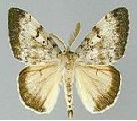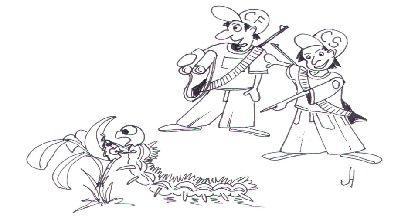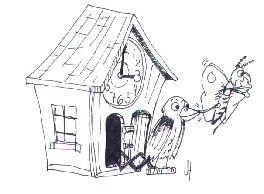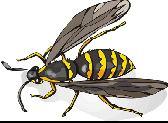Natural Solutions to Things That Bug You (64 page)
Read Natural Solutions to Things That Bug You Online
Authors: Myles Bader

WILD SUNFLOWER VS DIAMOND BACKS
 To eliminate diamond back moths, just use wild sunflowers. Pound the leaves and extract the juice and use as a spray diluting the juice of 1½ pounds of leaves with 4 cups of water, strain and spray.
To eliminate diamond back moths, just use wild sunflowers. Pound the leaves and extract the juice and use as a spray diluting the juice of 1½ pounds of leaves with 4 cups of water, strain and spray.
GYPSY MOTH
General Information:
 These were brought to the United States by a Frenchman hoping to breed them with silkworms.
These were brought to the United States by a Frenchman hoping to breed them with silkworms.
The northeastern Unites States is the hardest hit by gypsy moths attacking oak, birch, willow, linden, basswood and apple trees.
They tend to defoliate trees and have become a major pest. The adult moth hardly eats anything and the female cannot fly. The problem is, however, the larvae is a voracious eater and is very mobile. The larvae, eats at night, most of the time and is difficult to spot.
The female moth lays her eggs in large clusters that can reach up to 1,000 eggs, under stones or on tree trunks. You can even find the eggs on patio furniture or on your car. The caterpillars can travel as far as ½ mile on a strong current of wind. For some reason when the moth population, builds up too high, they are killed off by a virus.
NATURAL ENEMY
A ground beetle called
Calosoma frigidum
eats the caterpillar and hunts it down. The beetle has a black and greenish shine and is a night hunter. Another beetle that goes after the gypsy moth larvae is the
Calosoma sycophanta
and is another excellent caterpillar hunter
.



CALL FOR REINFORCEMENTS
One of the best methods is to call for a professional if the infestation is a major one. If not spraying with Bt or Neem™ will solve the problem without the use of pesticides or harmful chemicals.
USE THE SEX ATTRACTANT
Pheromone traps have been very effective in catching these pests. They should be coated with Dispalure® or Gyplure® (Gyptol) to lure in the male moths.
JAPAN HAS THE ANSWER
Biological control of this moth has been very successful. The Japanese insect
Oercyrtus kuvamai
is now produced by the USDA labs and has been released in several states including New Jersey, New York and Pennsylvania. The female of this parasite lays her eggs, in the eggs of the moth and destroys the majority of them.

DRIVE THEM CUCKCOO
If you have a black-billed or yellow-billed cuckoo living in your neighborhood, it would be wise to entice them to your property since they are the number one bird predator for gypsy moths. There are many other birds that like the moth for dinner but the cuckoo has a real thing for them.
FOREST SERVICE USES NPV
The U.S. Forest Service uses a Nuclear Polyhedrosis Virus (NPV) and marketed as Gypchek®. This spray is non-toxic to all other insects and animals but kills the gypsy moth. The forest service recommends two spraying to eliminate the problem.
STALK BORER MOTHS

GUMMING THEM UP
If you have a problem with stalk borer moths all you have to do to control them is to grind some young leaves from the gum tree into a fine powder and use it for dusting. You can also crush some young leaves and allow them to soak in water and add a few drops of a liquid soap. Soak the leaves until the water is green then use the water as a spray. Best to use the spray when the moths are active and be sure and test an area of your plants since this mixture may burn the plants.


WASPS/YELLOW JACKETS/BEES
Identification:
The adult wasps are about 1-inches long and a bright yellow and black or sometimes have white and black patterned bands on the abdomen depending on the species. Their wings are clear and folded neatly back when not flying. The queens are twice the size of the workers.
General Information:
 Wasps are beneficial insects that will not bother humans unless agitated. They consume insects that are pests and should only be eliminated from your immediate environment when they are pesky. Wasps are active in pollinating a number of crops including melons and spinach. Stay as far from their nesting places as possible since they will attack you if you get too close. If you see more than one wasp in your home they may be making a nest and you need to investigate thoroughly.
Wasps are beneficial insects that will not bother humans unless agitated. They consume insects that are pests and should only be eliminated from your immediate environment when they are pesky. Wasps are active in pollinating a number of crops including melons and spinach. Stay as far from their nesting places as possible since they will attack you if you get too close. If you see more than one wasp in your home they may be making a nest and you need to investigate thoroughly.
